Aac Get to Know You Activites
Augmentative and Alternative Advice (AAC) is a journey. Each and every mean solar day we tin movement forward. Together nosotros build language and meaningful communication.
AAC users learn when they are given many opportunities to see and hear linguistic communication on their AAC.
This commodity provides a wide depository financial institution of ideas that tin be used to build linguistic communication and communication. Many of these ideas may spark interest. Jazz up your spoken language therapy with these ideas. Make home fun and rich in language. Continue teams inspired to support the AAC user in new and dissimilar means.
For these ideas to work, we should:
- Make AAC e'er available,
- Get the squad on board,
- Remember to model, and
- Appoint and interact with the AAC user.
Learn practical and fun means you lot tin heave your AAC user'due south engagement and learning with our Build Language and Literacy video on need.
All of these ideas can been seen as opportunities to:
- Teach cadre words,
- Model grammar and
- Integrate literacy education
Recall to show respect for the age of AAC users. Always choose activities, games and books that are in line with what other people their historic period would do and enjoy.
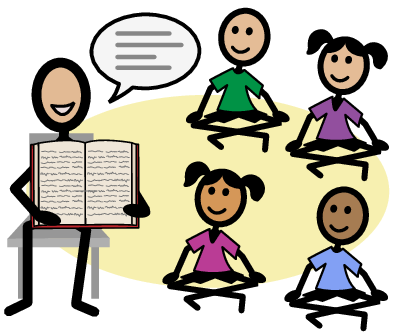
Using books to build linguistic communication
Books can be fun and interactive. We tin read the words, or tell stories from the pictures. Shared reading experiences can exist a fabulous manner to build linguistic communication. We should talk well-nigh what we are seeing in the book, non just read the words. Books also provide an platonic opportunity to detect and model core words. Add fringe vocabulary and some alphabet work to this, for even more language and learning.
Core words when sharing books:
We can model many cadre words when reading books.
For example, core words such equally: look, what?, where?, think, practise, more, different, practiced, bad, etc.
We can also look at the words, pictures and concepts in the book and think about what additional words could exist modeled.
For instance, if we are reading the funny book: "Piranhas don't eat bananas" by Aaron Babley, in that location are many things we can model.
- Core words: consume, not eat, bad, that bad, nosotros consume, what consume, similar, non like, desire eat, consume different, recollect proficient, think bad, etc.
- Then add together fringe words from the foods, fruits and body parts folders.
- We might not take the word "piranha" in the AAC organization, so this is a proficient chance to model spelling a new give-and-take on the keyboard.
More than volume ideas
Here is a list of additional ideas for using books to build language, with a little literacy on the side!
- Retell stories: Retell stories using pictures from the book. Utilise culling pencils to re-write parts or all of the story.
- Story Props: Use story props (large pictures, puppets or existent objects) to retell the story.
- Sequencing: Make cards of the major events in the story. Put cards into the correct society and retell story.
- Text innovation: Retell the story but modify details such as characters, settings.
- Different ending: Tell the story again but requite it a unlike ending.
- Elevator the flaps: Read books with flaps to elevator. If the book doesn't have whatever, make your own with post-it-notes.
- Get in the volume: Retell the story, simply put yourself in the story. Stick your photo over pictures in the volume.
- Cartoon and speech bubbles: Plow the book into a cartoon. Describe spoken language bubbles on post-it notes and retrieve of what characters tin say.
- Share the book: Visit a friend, family unit member or another class room to share the book. You can also blueprint and write a flyer/invitation to tell friends or others about your book reading session.
- Make silly mistakes: Brand silly mistakes when reading the volume. Discuss. Then write sentences with mistakes. Y'all can also practise editing skills when correcting the mistakes.
- Rhyming words: Find words that rhyme in the book. Say them and try to think of more than words that rhyme. Write lists of rhyming word families found in the volume.
- Kickoff sounds/letters: Focus on finding words that start with a particular sound/letter in the book. Write lists of words that showtime with a particular audio.
- Opinions: Discuss what you thought of the book. Write a volume review of the book. Give it a star rating.
- Favorite page: Find your favorite page in the book. Why do you like it? Rewrite the text for your favorite page.
- Syllable beats: Find long and curt words in the book and handclapping and count the beats (syllables) in each word. Try spelling long words, syllable by syllable.
- Grapheme feelings: Discuss how characters are feeling during unlike parts of the story.
- Character descriptions: Describe dissimilar characters in the book. Write descriptions of characters. Can you read the descriptions and lucifer to the characters?
- Word kinds: Hunt for different kinds of words in the book, due east.g. verbs, vs nouns, vs adjectives. Write lists of dissimilar kinds of words from the volume.
- Synonyms: Find words in the book, and think of synonyms for those words. How many different words tin can you think of, that hateful the same matter? Rewrite the judgement using synonyms. Write a list of synonyms.
- Antonyms: Find words in the book, and think of antonyms for those words. How many dissimilar words can you think of, that mean the opposite affair? Rewrite the sentence using antonym. Write a list of synonym and antonym (opposites) pairs.
- Make your own books: Use photos and videos to brand your own books. Impress these books and add them to the shelf so they tin can be read often.
Also remember about how we can utilise different printed volume materials for activities:
- Junk Mail/catalogues: Read junk mail/catalogues. Write a wish list or gift list or shopping list.
- Magazines: Read different magazines. Write a list of places to visit, people yous'd like to meet, things you want to see/buy.
- Travel Brochures: Share travel brochures and find amazing places to become and things to encounter. Write lists of places to travel to and activities to endeavor.
- Cook books: Read different cook books. Write ingredient lists. Write procedural text to explicate how to make something.
- Nonfiction books: Read nonfiction books on different topics. Enquiry topics of involvement. Begin a discussion web of things yous learnt about the topic.
- Instruction manuals: Look at manuals to figure out how things work. Re-write instructions and then they are easier. Take photos of favorite mechanical objects or appliances and write your own instructional manual to explain how it works.
- Newspapers: Read about news, weather and sport in newspapers. Write daily atmospheric condition reports. Write lists of best sporting teams and games being played. Find and discuss good news stories. Find ways to share and hash out the not-and so-expert news.
- Electronic books: Make use of awesome websites such equally Tar Heel Reader, for more books in a different format. Convert your Tar Heel Reader books into Pictello, where they can be read aloud, edited and shared even more than easily.
For some example Core Give-and-take Planners effectually books, visit the Literacy and Language section of the AssistiveWare Core Word Classroom.
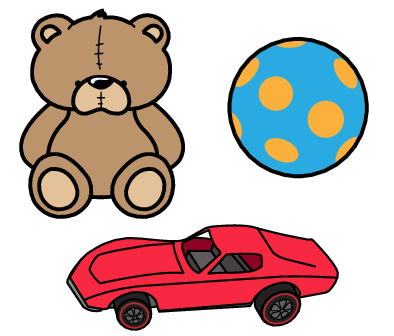
Using toys/games to build linguistic communication
People of all ages similar to play! We all have favorite toys and games. Detect toys and games that are engaging. Do activities that create opportunities to model language during play.
Repeated play gives us the chance to model linguistic communication regularly. We should also endeavour new things during each interaction in play. For example, bubbles may be a favorite activity. Mix upward the activity. Try different bubble blowers and wands. Go to different places to blow bubbling. Grab the bubbles with different things (eastward.g. not just hands, but fly swats, gloves, etc.). Be creative so that new concepts can be modeled within the activities. Dr Caroline Musselwhite would call it "repetition with variety".
Retrieve to testify respect for the historic period of AAC users. Ever cull toys and games that are in-line with what other people their historic period would practise and enjoy.
Core words in play:
Nosotros tin model many core words when playing. For instance, core words such as: more than, finished, want, similar, different, play, do, go, on, off, in, mine, me, you, yours, etc.
We can also look closely at the toy or game and think virtually what additional words could be modeled.

For case, if we are playing Mr Potato Caput, there are many things nosotros can model.
- Core words: put, on, off, more than, become, what, who, where, good, bad, like, where, etc.
- Then add together fringe words of body parts, clothing and colors.
- When Mr Potato Head dresses up as a "mermaid", we might not accept that discussion in the AAC organization, so this is a good gamble to model spelling a new word on the keyboard.
More toys & games ideas
The list of toys and games is endless. Do you have favorite games and toys you lot use with your AAC users? Here is a quick listing of some toys and games that could exist used to build linguistic communication.
- Building and construction toys: lego, duplo, wooden blocks, hammer, screws, nails
- Ball toys: soft balls, bouncy balls, basketball, soccer, tennis, balloons
- Abode corner play: kitchen, baby dolls, bedtime, shopping, tea parties
- Cars and vehicle play: cars, trucks, planes, ramps, roads, mail tubes equally tunnels
- Outdoor play: hide-and-seek, obstacle courses, skipping, hula hoops, swings, slides, scooter boards
- Tabletop games: puzzles, play dough, kinetic sand, threading
- Boardgames: Jenga, Twister, Guess who, Snakes and Ladders, Pie face, Bingo. More games we can play.
- Favorites: bubbling, Mr Tater caput
- Sensory toys: swinging, hammocks, edible bean bags, body socks, fidget toys, squishy and squeezy toys, lights, light tubes, lava lamps.
At that place are many awesome play-based apps, that tin be played on tablets. Fun and interactive, they can be a bang-up way to engage and model linguistic communication. To find the best play apps, bank check out these app developers:
- Toca Boca
- Tinybop
- Lego
- Sago Mini
- Dr Panda
- Bamba
- My PlayHome
There are many more! Do you accept favorite play-based apps?
Any play action can incorporate literacy, with a bit of inventiveness. Effort some of these ideas:
- Make your ain books: Use photos and videos for toys, games and during play to make your own books. Impress these books and add them to the shelf then they can be read ofttimes.
- Lists: Write lists of favorite toys and games. Utilize the listing to vote for what game to play side by side. Write a wish list of toys or games from a store catalogue. Write a list of the things you could make, (e.g. make a belfry, castle, fence, etc.)
- First sounds/messages: While playing, try finding words that start with a item sound/letter in the game. Write lists of words that get-go with a particular sound.
- Rhyming words: While playing, try finding words that rhyme in the game. Say them and effort to recall of more words that rhyme. Write lists of rhyming discussion families plant in the game.
For some example Core Word Planners around toys and games, visit the Leisure Time section of the AssistiveWare Core Word Classroom. Also, the Cadre Discussion 5 Minute Fillers have some quick and fun activeness ideas, with some great starting points for modeling.
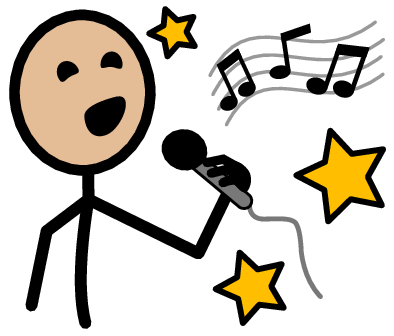
Using music to build linguistic communication
Music is a powerful manner to engage AAC users. Music is motivating. Information technology'south employ of rhythm and repetition allow opportunities to build language.
Core words in music:
We tin model many core words when doing music activities. For example, core words such equally: more, finished, want, like, different, play, on, off, upward, downwardly, good, bad, etc.
We tin also await closely at the music activity and think about what boosted words could be modeled.

For example, if nosotros are choosing a "Vocal of the day", in that location are many things we can model.
- Core words: what, like, think, skilful, bad, upwards, down, on, off, who, etc.
- And so add together fringe words from the music & sound adjectives/describing words folders.
- When choosing a new song like "Gangham fashion", we might non have that give-and-take in the AAC organisation. This is a good chance to model spelling a new word on the keyboard.
More than music ideas
Here are a few more ideas to use music to build language.
- Choosing music: Brand choices nigh songs or artists to listen to, or to sing along to. Choose musical instruments.
- Vocal of the day: Every day 1 vocal is chosen, and information technology tin can be played throughout the solar day. Every one can take a plough to option a vocal. And everyone gets to give their stance of called songs. Make certain y'all make song selections from various genres: opera, land, not just modern music. Also choose catchy, nonetheless annoying songs every now and and then (e.g. Macarena, Gangham Mode, The Nutbush, Achy Break Middle, etc.)
- Vocal innovations: Change the words to familiar songs to mix things up. For example, Baa Baa Black Sheep - could exist changed to "Baa Baa Green Sheep". There are lots of fun online websites that tin let y'all to change song lyrics to popular songs - in the manner of Mad libs!
- Lyric writers: Write your own song from scratch, based on ideas and areas of interest. Songs can be lists, favorite words, or poems. Try the website Melobytes to alter these words into music!
- Raps: Write words, lists or poems and plough them into to raps! The app AutoRap will change any words (even those spoken by an AAC device) into a rap.
- Puppet concerts: Choice your favorite vocal and some puppet characters and make a concert. For instance, mayhap the monkey puppet sings "Katy Perry" on the embankment. Y'all can create high-tech concerts by using the app Puppet Pals.
- Party music: Plan the music you want to play for a party. Write lists. Vote for songs.
- Artist of the week: Cull an creative person and listen to unlike songs from them for the week. Share thoughts and opinions about the artist, the songs and their style of music.
- The Vox: Concur auditions for "The Voice", just like the Television receiver prove. Have judges on spinning chairs. Give opinions about performance and permit people know if they are in or out!
- Brand your own musical instruments: Brand DIY musical instruments out of boxes and containers.
You lot can find a general Cadre Give-and-take Planner for music in the AssistiveWare Core Word Classroom.

Build language in conversations
Conversations tin be referred to equally those talks between two or more than people. News, ideas, and feelings are shared in conversations. These chats happen everyday. They are often fast moving about a diverseness of topics. Sometimes we talk virtually almost the activity in front of us. But more likely, speakers will conversation more than near their life, their interests and their plans. AAC users are often not given the gamble to participate in conversations.
How tin nosotros give AAC learners opportunities to engage with the people effectually them? They need chances to see and hear conversations. We tin model in conversations. This volition help them to learn how they tin find the right words to take upwardly their plough in a conversation. Modeling telling news, request questions, changing topics will all help an AAC user.
Does an AAC user have a balanced AAC system that gives them the words and language needed to join a conversation? It can exist difficult to predict exactly what words nosotros might need. We could talk about anything! This is why we need so many words! Cadre and fringe words tin can be combined in many different ways to say many different things. And conversations tin be a great way to model typing new words that we need into our keyboard, if we cannot find them in our AAC system.
Nosotros tin often find incidental opportunities to kickoff conversations inside an action we practise. For instance, while you are doing a farm puzzle, the AAC user may remember the story nearly a fourth dimension they went to a farm. Use this side conversation to model near the farm trip (e.g. We went to a farm, Subcontract was fun, I liked the chickens, We fed the pigs, etc.). If a unlike or related topic of conversation comes upwardly, go with it and see what extra words and interaction happens.
Lastly, one of the well-nigh of import things we can do for an AAC user in conversations is to permit time. Suspension and wait during conversations to give them the fourth dimension they need to offer something into the conversation. Without pause and await time, conversations can move on apace without the AAC user having a gamble to say anything.
More conversation ideas
Hither are some example areas of conversations that nosotros can piece of work on:
- Tell news: Model and talk about things that have happened. Utilize photos of past events. Save news and stories onto the AAC organization to exist used speedily and easily.
- Ask questions: Show how you can enquire questions during conversations. Remember that open up-concluded questions will permit more than language practice, and let the AAC user take more control of the conversation.
- Kickoff a chat: Teach how yous can showtime a conversation by telling news or asking questions. Relieve good chat starters onto the AAC arrangement to be used chop-chop and easily.
- Irresolute topic: Information technology is very useful to be able to change the topic of conversation. Model what words you lot tin can utilise to modify the topic. You may save quick phrases onto an AAC user's system.
- Continue a conversation going: There are many social interjections we use during conversations to keep the conversation going. They can be statements similar: Wow!; Really?; What!; That's great!; No way! Whatever!, etc. Model how these can exist used when you lot are chatting. If y'all are using Proloquo2Go, you lot can find these kinds of words in the Chat > Expressions binder.
- Tell jokes: Telling jokes can exist a peachy manner to intermission the ice and start some fun social interaction. Save favorite jokes into the AAC system to be used at any time.
- Give compliments: Giving someone a compliment can be a great way to start a conversation. Requite compliments to the AAC user. Model the words you need to say overnice things to the people around you.
- Give your opinion: Say what you think! When someone shares news or ideas, the people around them will oft say what they call up. Give AAC user a run a risk to requite positive or negative comments to show what they think.
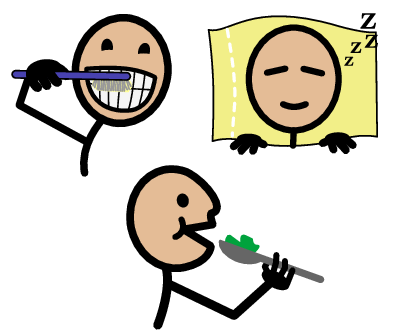
Build linguistic communication in everyday routines
Day in and day out, nosotros stick to some common routines. How can we build AAC into these? Use every run a risk we have to model words and sentences on AAC.
If things might become wet (eg. in the bath/shower), recollect about using light-tech or newspaper-based versions of your AAC arrangement.
Core words in everyday routines:
Nosotros can model many core words when doing common routines. For example, core words such as: more, finished, exercise, put, take, give, become, different, on, off, here, at that place, proficient, bad, etc.
We can also look closely at the routine activeness and call back near what boosted words could be modeled.

For instance, if nosotros are folding and putting away the washing, in that location are many things we tin model.
- Core words: help, practice, put, give, take, become, here, there, in, out, like, think, good, bad, where, who, at present, etc.
- Then add together fringe words of clothing, people and where words.
- When we are folding the washing, we might find a new t-shirt with a slogan on the forepart. We might not accept those words in the AAC system, so this is a skilful chance to model spelling a new word on the keyboard.
More than everyday ideas:
Wait at your everyday routines and find ways to model more and build language. Here are some examples:
- Cooking: Talk about what you have to do, the ingredients, the sense of taste, what yous like or dislike about it, etc.
- Watching Boob tube & movies: Talk well-nigh what happened. Who's your favorite character? Which part practise yous like most? How did information technology fabricated yous experience (eg. scared/excited)?
- Looking at photos: Talk about the pictures, the people, what happened, what yous like, what you come across, etc.
- Tidying upward: Talk well-nigh what you have to do. Folding and putting laundry away. Discuss where socks and other clothing goes. Put abroad the groceries and talk about what goes in the refrigerator and what in the cupboard.
- Massage: During regular massage session, model language. Talk nigh body parts.
- Everyday routines: Talk about what you are doing during everyday routines like brushing pilus, bathroom fourth dimension, getting dressed, bedtime, etc.
- Going out: Program what you lot need to take when you go out. Talk near where and when you lot are going and who you might encounter.
There are many ways to create linguistic communication opportunities at abode.
Go to the AssistiveWare Core Word Classroom for many more ideas and planners around common routines that volition assistance you to teach core words and build linguistic communication.
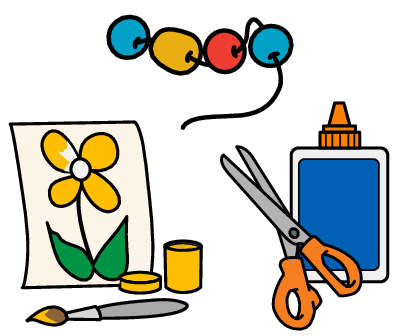
Using creativity and exploration to build language
Become creative with AAC users of whatever age! Making and creating and exploring can exist engaging means to build lots of language.
If things might go messy, think about using light-tech or paper-based versions of your AAC system.
Core words in Artistic activities:
We can model many cadre words when doing artistic activities. For example, core words such as: more, finished, desire, make, put, help, in that location, here, all, some, different good, bad, etc.
Nosotros tin can as well expect closely at the artistic activity and think near what additional words could be modeled.
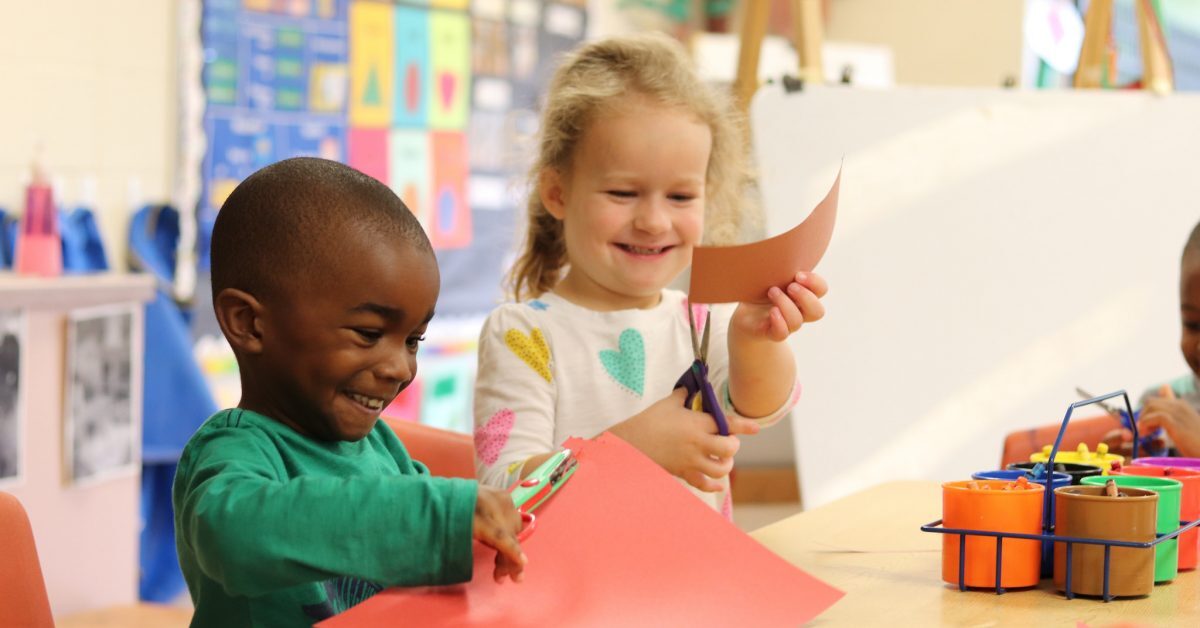
For example, if we are doing bill of fare-making, in that location are many things nosotros can model.
- Core words: who, give, put on, like that, desire more than, dissimilar, for you, etc.
- Then add fringe words of colors, shapes, art supplies and conversation words.
- When making the cards, nosotros need write who we want to send the carte to. We might non have that person's name in the AAC system, and then this is a proficient chance to model spelling names on the keyboard.
More creative ideas
Let'southward look at a few more ideas on how to go artistic and build linguistic communication:
- Carte making: Make cards for friends and families. Discuss designs and colors. Cards can be for birthdays, thanks cards, Christmas and Get Well cards. Write lists of names to send cards to. Plan and write special messages and greetings to put inside each carte du jour.
- Scrapbooking: Use photos and paper and paint to make scrapbooks. Write stories well-nigh each photo. Decorate a little or a lot.
- Painting: There are so many means to become creative with painting. From the materials, to the tools, at that place are many choices and options. Create painting inspired past other artists. Explore adding unlike textures and using different tools to paint. Take photos of finished paintings and use them to make your own books. Print these books and add together them to the shelf and so they can be read oft.
- Costume Blueprint: Plan costume parties and design special outfits. Get creative making special hats, or different features for the costume.
- Diorama: Create mini worlds by making dioramas. A quick search of Pinterest volition give you plenty of ideas.
- Sensory boxes and bins: Make full bins, trays and boxes with goodies for sensory play and exploration. Sand, gravel, rocks, pasta, rice can all brand good starting textures in boxes. And so hide objects, plastic letters; annihilation to observe and explore. A quick search of Pinterest will give you plenty of ideas.
- Play-dough creations: Make interesting and fun creations with play-dough. Decorate with sequins, feathers, shells, rocks and leaves. Take photos of your creations and use them to tell a story and make your own volume. Print these books and add them to the shelf then they can be read oft.
- Party decorations: Plan a party. And then accept lots of fun choosing a theme and making unlike party decorations. Choose colors, recycled objects and pictures to add to the political party theme.
- Fine art bear witness: Utilise artwork created to host an art evidence. Write invitations to invite friends and family unit to attend the show. Write lists and stories about each painting. Display this written work alongside the fine art.
You can find a general Core Word Planner for art and i on sensory play in the AssistiveWare Core Discussion Classroom.
Start building language
In the AAC journey, it is important to continue building linguistic communication and communication for our AAC users. This list is just the outset. What ideas do you accept? Allow us know!
Follow the links below for more strategies to build language and communication:
- Learn about core discussion teaching strategies
- Teach grammar
- Integrating comprehensive literacy instruction
Become to the AssistiveWare Cadre Word Classroom for many more ideas and planners that volition help you to teach core words and build linguistic communication.
Links & References
- AssistiveWare. Advice is conversation. [Video]
- AssistiveWare. Tar Heel Reader to Pictello Converter. [Useful tool]
- Eye of Literacy and Inability Studies. Tar Heel Reader. [Website]
- Hartmann, Amanda. Hook 'em in… and build language! Strategies for engaging autistic students. [Blog mail]
- Hartmann, Amanda. The games we play. [Blog postal service]
- Hartmann, Amanda. Language opportunities at domicile. [Web log mail]
- McDonald, Alison. 15 Reading materials that aren't books.[Weblog post]
- Musselwhite, Caroline & Sheldon, Erin. [2015]. Reading equally Advice: Selecting books, Angelman Syndrome Foundation. [Video]
- Musselwhite, Caroline. [2016]. Importance of repetition and variety in learning. [Video]
- Pinterest. [2019]. [Website]
- Symbols. [2019]. © Symbolstix, LLC.
Source: https://www.assistiveware.com/learn-aac/get-practical-ideas-for-building-language
0 Response to "Aac Get to Know You Activites"
Post a Comment